In our previous two posts, we introduced a case study model to demonstrate the utility of JDB1745 and we discussed a possible methodology that will give us more accurate results than what has hitherto been published. Now that we have examined the data’s lineage, established as much objectivity as possible, and implemented authority records in our model of Lord Ogilvy’s regiment, we are ready to take a look at the information and organize it in a way that facilitates the most useful analysis for our needs.1 We know that our assessment will not be comprehensive, as more sources are revealed and further biographical information is entered into the database. Yet we can take a ‘snapshot’ based upon the data that we do currently have. Here is what the numbers look like:
- Mackintosh’s Muster Roll: 628
- Rosebery’s List: 41
- Prisoners of the ’45: 276
- No Quarter Given: 761
To these, a few further sources can be consulted to add yet more names to the overall collection. A document at the National Library of Scotland, for example, contains another twenty two from Ogilvy’s regiment, and 362 more with no particular regimental attribution.2 A broadsheet distributed by the Deputy Queen’s Remembrancer from 24 September 1747 furnishes a list of 243 gentlemen who had been attainted and judged guilty of high treason, some of whom had likely marched with the Forfarshire men.3 Various other documents from NLS and in the Secretary of State Papers (Scotland, Domestic, and Entry Books) at the National Archives in Kew contribute thousands more, as do those from the British Library, Perth & Kinross Archives, Aberdeen City & Aberdeenshire Archives, and dozens of other publicly accessible collections.4 With a baseline collation of the major published sources regarding Lord Ogilvy’s regiment, buttressed by a few other useful manuscript sources, we have a solid corpus of data to examine.
At this point, the switch from objective data to subjective analysis must be made. The data itself remains clean, but the way in which it is used by the individual researcher has a great breadth of flexibility based on what information is accessed and what questions are asked. In this case study, I, as the test researcher, am presenting one particular set of queries using one possible organizational methodology. This may be easily done on a per-source basis, and while significantly more complex, it may also be done on an all-inclusive basis. No matter the scenario, we have already acknowledged that the included sources have many overlapping names, so it is first important to compare the entries to weed out duplications to the best of our ability.5 The importance of this is illustrated by a comparative statistical analysis of all known ages of the Ogilvy men.
According to No Quarter Given (NQG), the average age of these soldiers is 31, but less than 10% of the entries have age data assigned. All of the other sources combined, however, show an average age of 28 with nearly 12% of this data known. Displaying a much greater divergence, NQG provides only 15.51% of its entries with information on rank (out of 761 records), while the other sources combined show rank data for 69.78% of their entries (out of 1016 records).6 The isolated rank data across the sources show similar ratios, especially when we consider that the entries from The Prisoners of the ’45 (P45) only include those who were captured and subsequently confined and/or tried. Getting back to the idea of data lineage, however, this does not mean we can take for granted that 276 (P45) private men of Ogilvy’s regiment were imprisoned out of a total of 527 listed in Mackintosh’s muster roll (MRF). To do so would be a gross generalization based upon transcribed, non-normalized, non-compiled data, but it does give us a rough idea of the numbers that may have been involved.
Moving on to name and place-name frequencies, some simple charts are illustrative of the family and origin of men from Ogilvy’s regiment. By grouping location and surname data, we can easily describe the most populous occurrences of both variables. In this particular study, we have obviously chosen to calculate the spread of locations in Angus, in which county most of the soldiers resided, but other inclusive areas could also easily be mapped. Likewise, by comparing the appearances of common surnames across different secondary sources, we are able to assess not only the numbers of different families involved in the regiment, but also which sources display both common and disparate persons in their rosters.7 In this example, it is noteworthy that MRF only records twelve men with the surname of Duncan (eight of which are also listed in P45), while NQG lists fourteen. It is not known how the authors of NQG assigned the five additional Duncans to Ogilvy’s – or even where they came from – as all of the NQG citations only include the selfsame sources in this case study.
Using a similar process of grouping data with the assistance of authority records, we are also able to gain a better idea of what types of occupations these soldiers held while not on the march. As expected, the most common vocations are those in the agricultural and servitude sectors, which mirrors the larger constituency of the Jacobite army.8 Manual labour, whether industrial or agrarian, dominates the output, but the manufacturing sector is also well represented by a strong textile and shoemaking presence. As much of Forfarshire/Angus was rural, it makes sense that the professional building and provisioning trades are less common, though they are still denoted here by a significant turnout of masons and general merchants, respectively.
From these larger, data-driven assessments, we may also narrow down on the specific cases of individuals that are revealed after a careful look through the collated information. When comparing the occurrences of Duncans in Lord Ogilvy’s regiment, we have demonstrated that the published sources offer differing results. A soldier named Robert Duncan, a farmer from Lochlee, is listed in Mackintosh’s muster roll (and copied into NQG) with the note that he apparently was able to return home after the hostilities had ended. This seems to be corroborated by the absence of his record in P45, a useful publication that focuses on captured Jacobite prisoners. Furthermore, there is a record in Rosebery’s List (taken from the original excise officers’ lists of alleged rebels) for Robert Duncan, a farmer from Lochlee, that does not show any regimental affiliation. Thus, our ‘person authority’ for this Robert Duncan will contain these three disparate records, each of which can be viewed on its own or under the compiled authority. When analyzing this data, however, another Robert Duncan from Ogilvy’s made an appearance, one who is absent from the common published sources. This Duncan is described in detail in the papers of the 2nd Earl of Albemarle, which state that this man was a gardener in Brechin parish who enlisted in the second battalion of Lord Ogilvy’s regiment on Christmas 1745. He is recorded to have delivered his arms to the minister of Edzell on 24 April 1746, and had further surrendered to the authorities on 23 June 1746.9 No evidence is currently available to determine the ultimate fate of this ‘phantom’ Robert Duncan, but we may now add him with confidence to any future studies of the Jacobite constituency.
A second example in the same vein is that of James McCudy, whose path is a bit more difficult to discern due to a likely case of mistaken identity. This soldier’s name does not make an appearance in any of the published sources, despite being found in numerous archival documents listed as an ensign in Lord Ogilvy’s regiment.10 It is very clear that this man’s surname is spelled ‘McCudy’ across the primary source documents regardless of hand, yet the only similar entry in the published lists refers to a James Moudie. This entry for Moudie is present in all three of MRF, P45, and NQG (but not in Rosebery’s List), which likely means that it was mistranscribed by Mackintosh or possibly from the Montrose jail returns by Seton and Arnot, and that error was carried on down the line through successive published sources. We can be confident that this is the same man because they are both listed as ensigns from Arbroath in Ogilvy’s, and this biographical information does not accurately relate to any other men of similar character or name in any primary sources that have yet been consulted. We can also be satisfied that this information does not relate to another man who is present in these lists with the name of James Moodie, also in Ogilvy’s, but instead hailing from Auchmithie in St Vigeans parish. Indeed, that Moodie was a private who voluntarily enlisted in the Jacobite army before the march into England.11
Getting back to our man McCudy – ostensibly the same person as James Moudie from Arbroath – none of the published sources display his age of nineteen years, as shown in an archival list of officers committed to the New Gaol in June 1746 after being captured in Scotland.12 There is a note next to McCudy’s name that states he was not actually present at Southwark, despite appearing on the list. A similar roster duplicates this information but has the entry subsequently crossed out, also containing a note that he was never brought to prison in the first place.13 Though we cannot yet trace James McCudy’s movements after his processing through Montrose gaol on 25 April 1746, Seton and Arnot believe that he (‘James Moudie’, actually) was ultimately released under the General Pardon of 1747 (20 Geo. II., c. 52). And in one more tempting thread to follow, yet another James Mudie from Arbroath was discovered while sorting the archival data; this man was evidently a writer or solicitor who was ‘Said to have served the Rebels in quality of an Officer, now a Prisoner’.14 While there is no evidence that he joined up with Lord Ogilvy, it is a distinct possibility considering his place of origin. This Mudie does not appear in any of the published sources surveyed in this study, and of all the men mentioned here, only the Auchmithie Moodie appears in No Quarter Given.
A great deal of information has been presented here about the soldiers of the Forfarshire regiment during the last Jacobite rising. In summation, it is but a limited demonstration of what may be efficiently discerned using a purpose-built database like JDB1745, together with a sound methodology to analyze the data itself. In this three-part series about why researchers might find such a tool useful, we have provided relevant information about age, rank, location of origin, and surname frequency from the published sources used by many scholars of Jacobitism. We have also discovered at least two additional persons not present in these publications, and have assessed the values and deficiencies of those sources. It must be stressed that any system used to present prosopographical information about historical subjects should be strongly based upon a logical data lineage, objective representation, and a sound taxonomy. It is our belief that until now, there has never been a modern, accurate assessment of the Jacobite constituency – either small- or large-scale – undertaken by any scholar or institution, and this highlights the usefulness and necessity for a research tool like JDB1745 to be considered essential in the field of Jacobite studies.
Darren S. Layne received his PhD from the University of St Andrews and is creator and curator of the Jacobite Database of 1745, a wide-ranging prosopographical study of people concerned in the last rising. His historical interests are focused on the mutable nature of popular Jacobitism and how the movement was expressed through its plebeian adherents. He is a passionate advocate of the digital humanities, data and metadata organization, and Open Access.

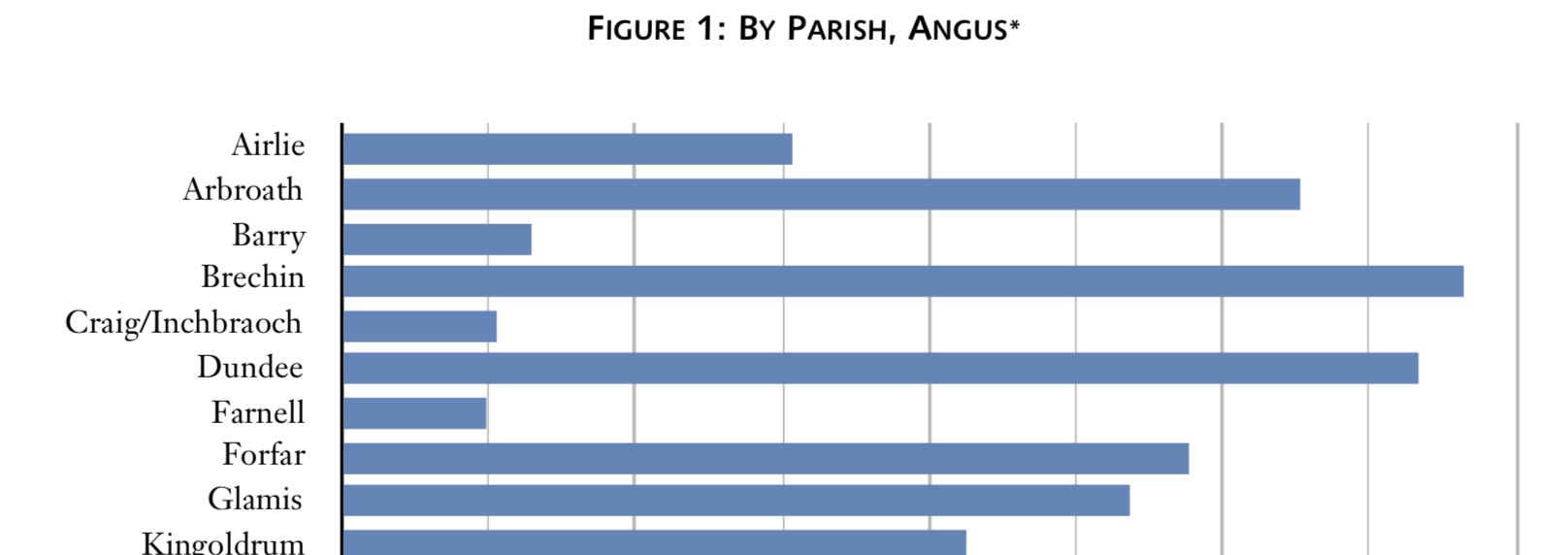
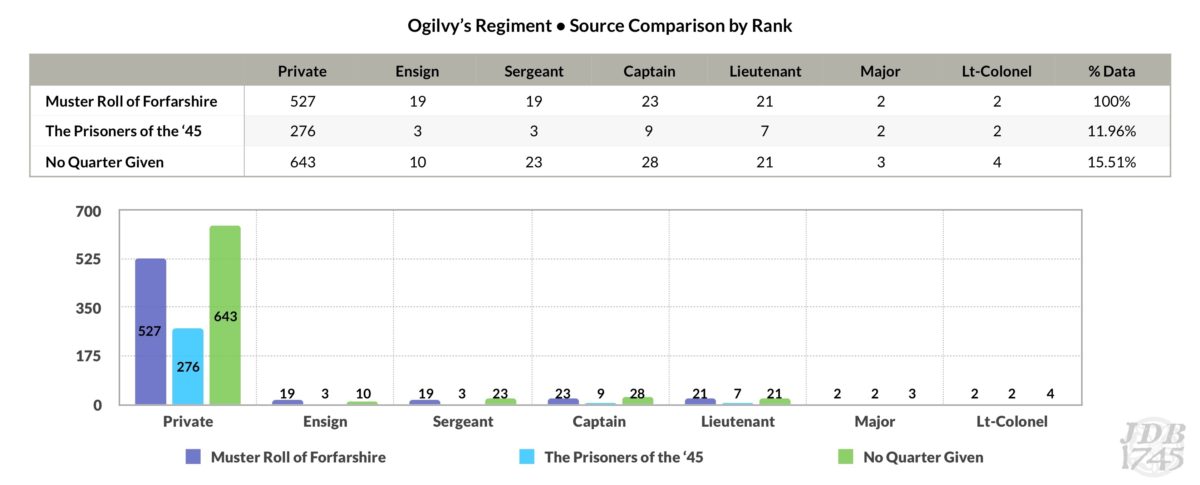
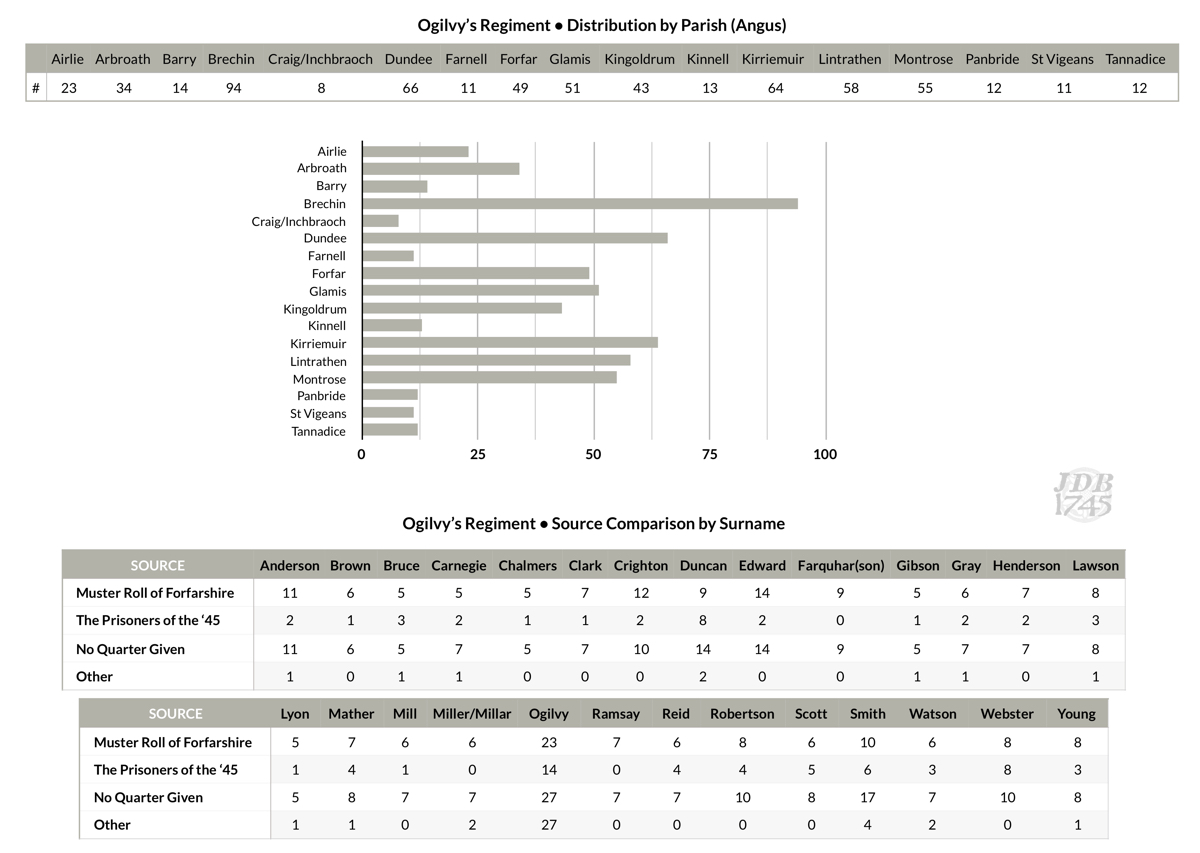
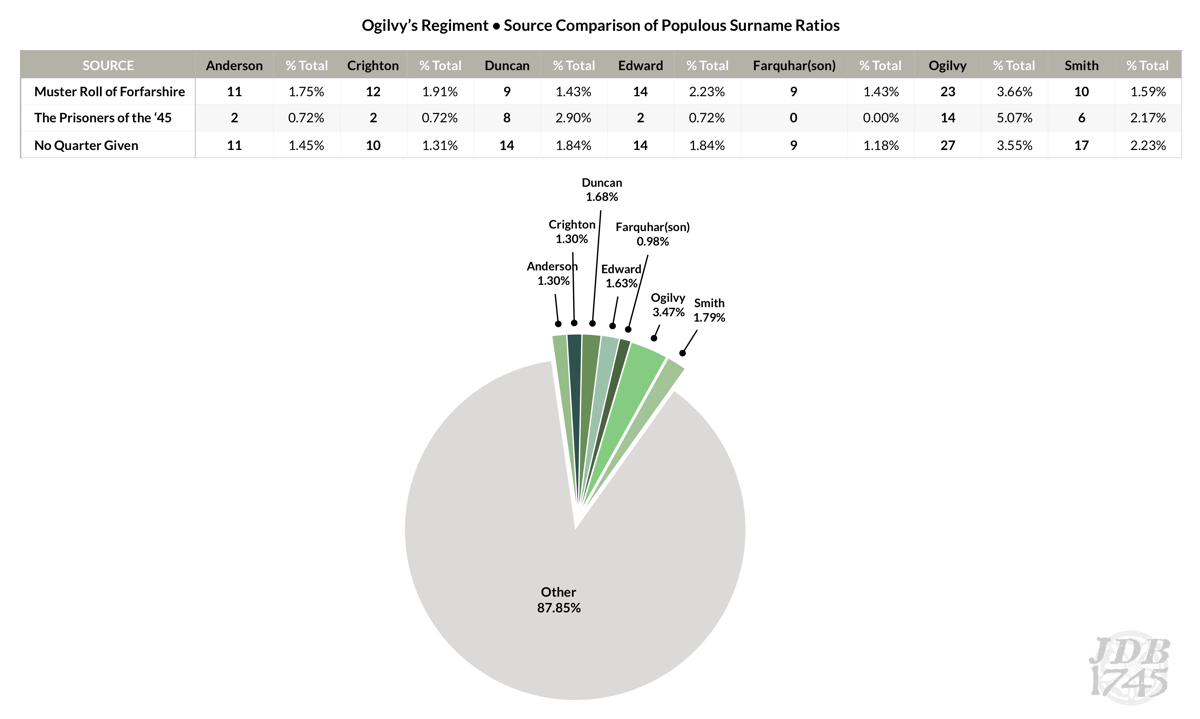
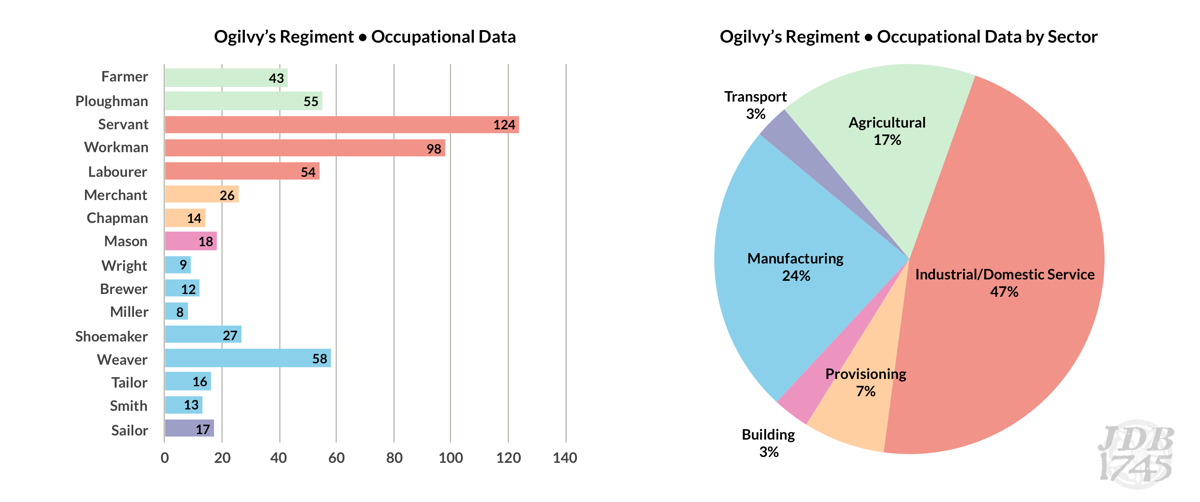





Several of my ancestors went out with Airlie.
https://www.electricscotland.com/webclans/stoz/shaw5.html
I am looking for detail as to the Ogilvy Regiment’s actions at Culloden on the right flank…
Tapadh Leit
Hi William, please feel free to email me directly (darren at jdb1745 dot net) with some specific questions about what you’re looking for and I’ll see what I can do to help.
Will do Darren! Tapadh leit
Hi , I am also looking for this info as I have found some documentation that relates to the possibility of an ancestor from Montrose who was with Ogilvy’s regiment. I have tried to obtain a copy of the muster roll for Forfarshire to no avail.
Hi Nathan, you’re welcome to contact me directly (darren at jdb1745 dot net) with further information about the documentation you mention. I am not a genealogist but if I can help, I would be happy to do so.